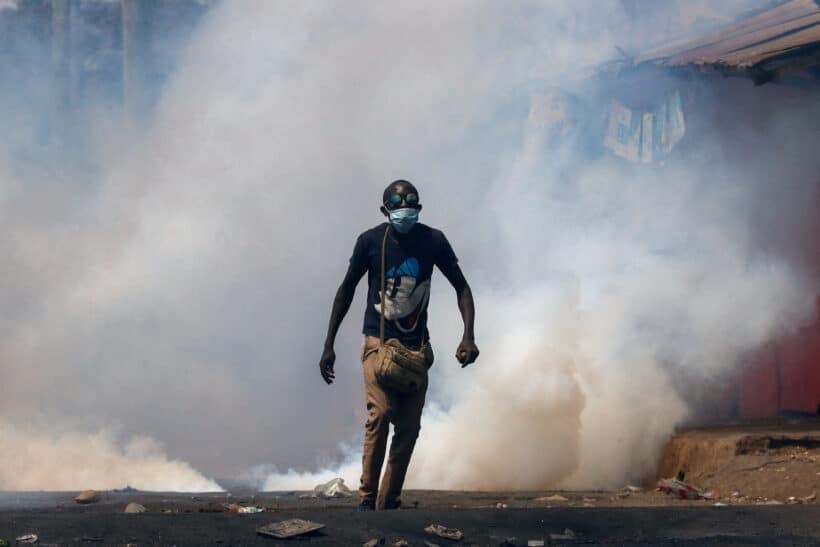
NAIROBI, July 2 (Reuters) – Riot police used tear gas to disperse protesters in Kenya’s capital Nairobi on Tuesday and demonstrations took place in other towns, after young activists called for more protests following a week of clashes in which dozens died.
Reuters journalists saw clouds of tear gas on a main road through central Nairobi before midday, where riot police in helmets had been present since early morning.
Outside the capital, Kenyan television stations showed hundreds of protesters marching peacefully, carrying palm fronds in Mombasa on the Indian Ocean coast, and dozens in Kisumu on Lake Victoria. In the southwestern town of Migori, protesters had set tyres on fire.
Members of the protest movement, which has no official leaders and largely organises via social media, have rejected appeals from President William Ruto for dialogue, even after he abandoned proposed tax rises that triggered the demonstrations.
Dozens of Kenyans have been killed in demonstrations and clashes with police since June 18, most of them shot by officers last Tuesday, when some protesters tried to storm parliament to block lawmakers from voting on the tax increases.
Infuriated by the deaths – at least 39 according to the government-funded Kenya National Commission on Human Rights (KNHCR) – many are demanding that Ruto steps down.
DEMANDING RUTO’S RESIGNATION
“We are determined to push for the president’s resignation,” said Ojango Omondi, an activist in Nairobi. “We hope for a peaceful protest and minimal casualties, if any.”
The authorities appealed for calm.
“It’s a beautiful day to choose patriotism. A beautiful day to choose peace, order and the sanctity of our nationhood,” State House communications director Gerald Bitok wrote on X on Tuesday, adding in Swahili: “Violence is not patriotism.”
Downtown Nairobi was busier on Tuesday morning than it had been in recent days, with shops that had been shut during the protests reopening. Residents believed the worst of the unrest had passed for now.
“I think it’s not going to be maandamano (protest) because maybe people are afraid, because some people have been shot,” said Kennedy Otwal, who was walking through downtown.
The protests, which started as an online outpouring of anger over nearly $2.7 billion of tax hikes in a proposed finance bill, have grown into a nationwide movement against corruption and misgovernance.
CAUGHT BETWEEN DEMANDS
Ruto, facing the most serious crisis of his nearly two-year-old presidency, has been caught between the demands of lenders such as the International Monetary Fund to cut deficits, and a hard-pressed population reeling from the soaring cost of living.
He has directed the treasury to come up with ways to cut spending to fill a budget gap caused by the bill’s withdrawal, and also said more borrowing will be required.
Veteran anti-corruption activist John Githongo told Reuters that while Ruto had addressed the nation and media, “there isn’t an indication that he wants to take action” on protesters’ demands, including firing corrupt officials.
“There hasn’t been any indication by the government that they are going to take the calls to deal with corruption seriously,” he said.
The protests were mostly peaceful until last Tuesday, when some protesters briefly stormed parliament and set part of it ablaze, and police opened fire.
Ruto has defended the actions of the police, and blamed the violence on “criminals” who hijacked the demonstrations.
(Reporting by Aaron Ross, Monicah Njeri and Jeff Kahinju; Additional reporting by Olivia Kumwenda-Mtambo; Writing by Hereward Holland and Peter Graff; Editing by Andrew Heavens and Bernadette Baum)

